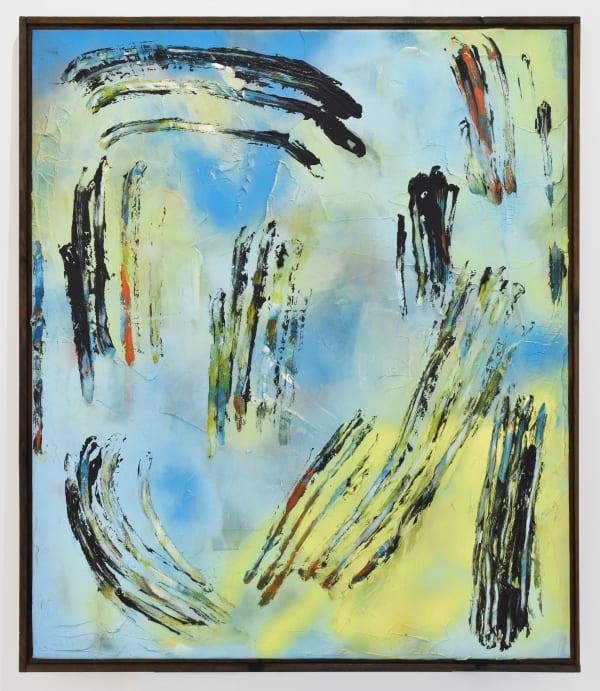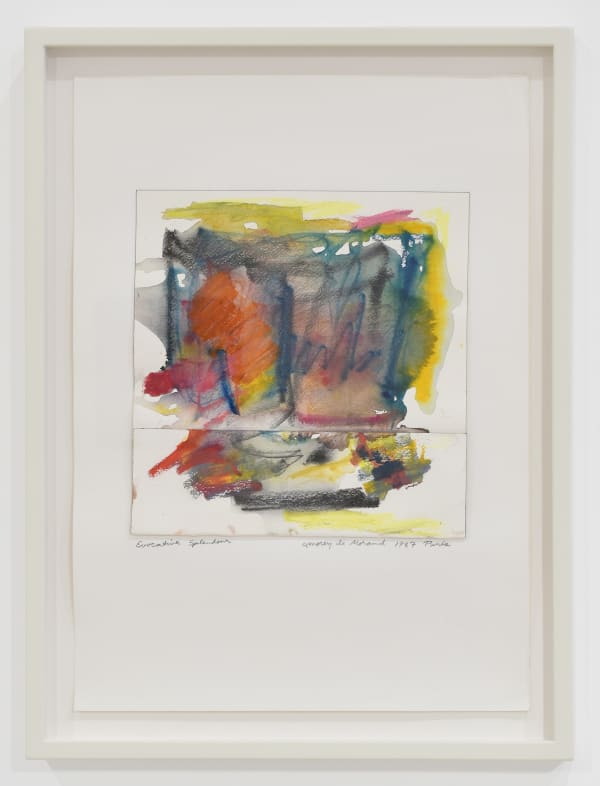Colette Morey de Morand
1934–2022
Colette Morey de Morand was a Paris-born, London-based abstract painter whose career spanned more than sixty years. Her work moved between gestural expression and geometric structure, always grounded in a deep exploration of memory, place, and material presence. From her early years to her final paintings, she remained committed to abstraction as a way of translating experience into visual form.
Born in Paris to a Ukrainian mother and a French father, she was raised in Canada after her family fled the political upheaval of early 20th-century Europe. Although she initially earned a science degree at the University of Toronto, her artistic inclinations led her to study painting and printmaking, first in Canada and then in New Zealand, where she lived during the 1960s. There, she studied under Colin McCahon and gained early recognition for her metaphysical landscape works.
A turning point came through encounters with Clement Greenberg and Len Lye, which encouraged her shift toward abstraction. Her painting became more gestural, intuitive, and emotionally charged, reflecting a deep interest in the metaphysical qualities of form, light, and space. A Queen Elizabeth II Arts Council grant in the 1970s allowed her to travel widely and deepen her connections with artists in New York, Paris, and London.
Settling in London in 1975, she became part of the city’s independent art scene. Though she never aligned herself with the dominant trends of minimalism or conceptualism, she developed her own abstract language rooted in color, gesture, and structure. Her friendships with artists such as Anthony Caro, Sheila Girling, Patrick Caulfield, and Paula Rego helped sustain a life of rigorous and experimental practice.
Throughout the 1980s and beyond, she participated in major workshops and residencies including the Triangle Workshop in New York and projects in India, Vermont, Ireland, and Spain. Her paintings during this time became more physical and performative, often incorporating thick pigments, marble dust, and experimental surfaces. She spoke of painting as a kind of dance, where movement and emotion became embedded in the mark.
Her later works, including the Lewes Suite and Berlin series, explored rhythm, memory, and the layering of cultural and personal histories. In her final years, despite health challenges, she continued to paint with vitality and curiosity. Her last series, titled Becoming, Not Being, was inspired by the philosophical writings of Gilles Deleuze and reflected her ongoing commitment to art as a process of transformation.
Morey de Morand passed away in 2022, leaving behind a body of work that is both deeply personal and resonant with universal themes. Her paintings remain a testament to an artist who dedicated her life to the possibilities of abstraction.








